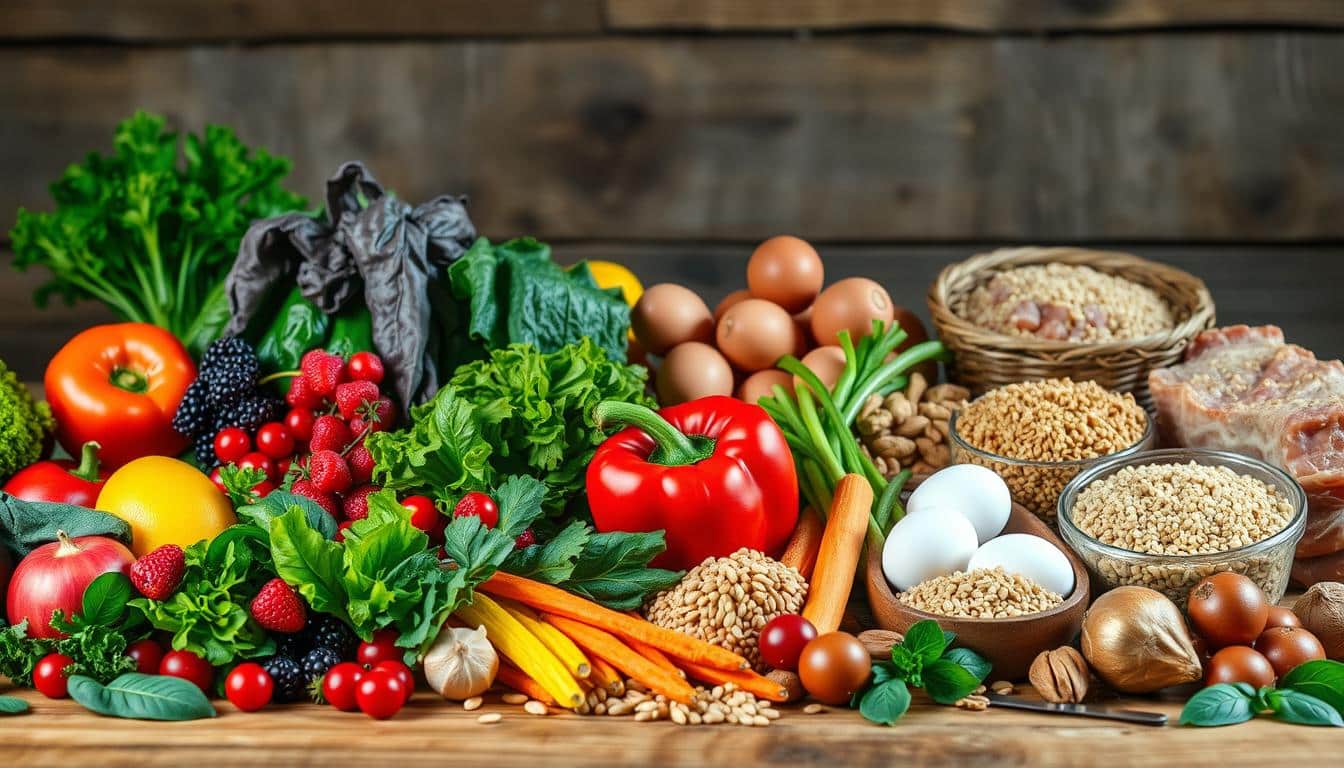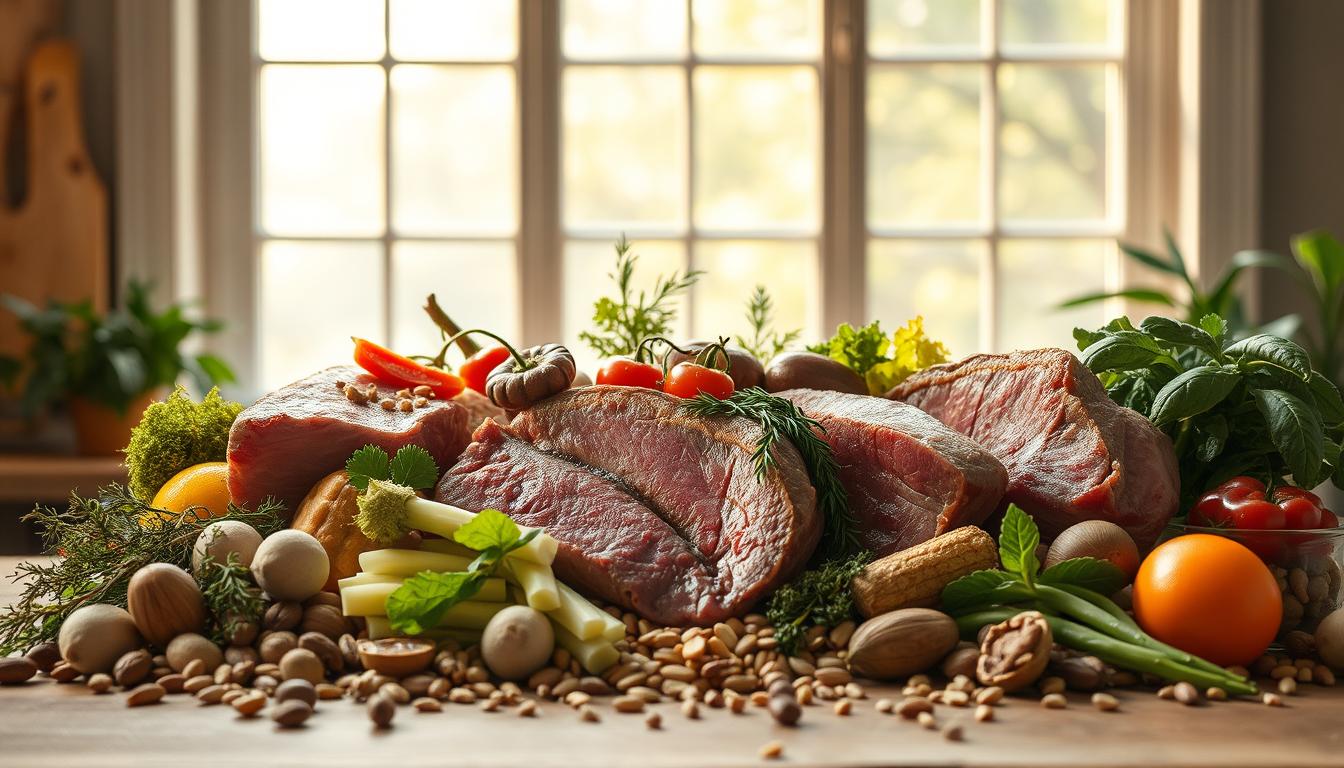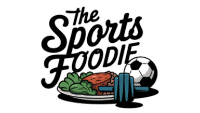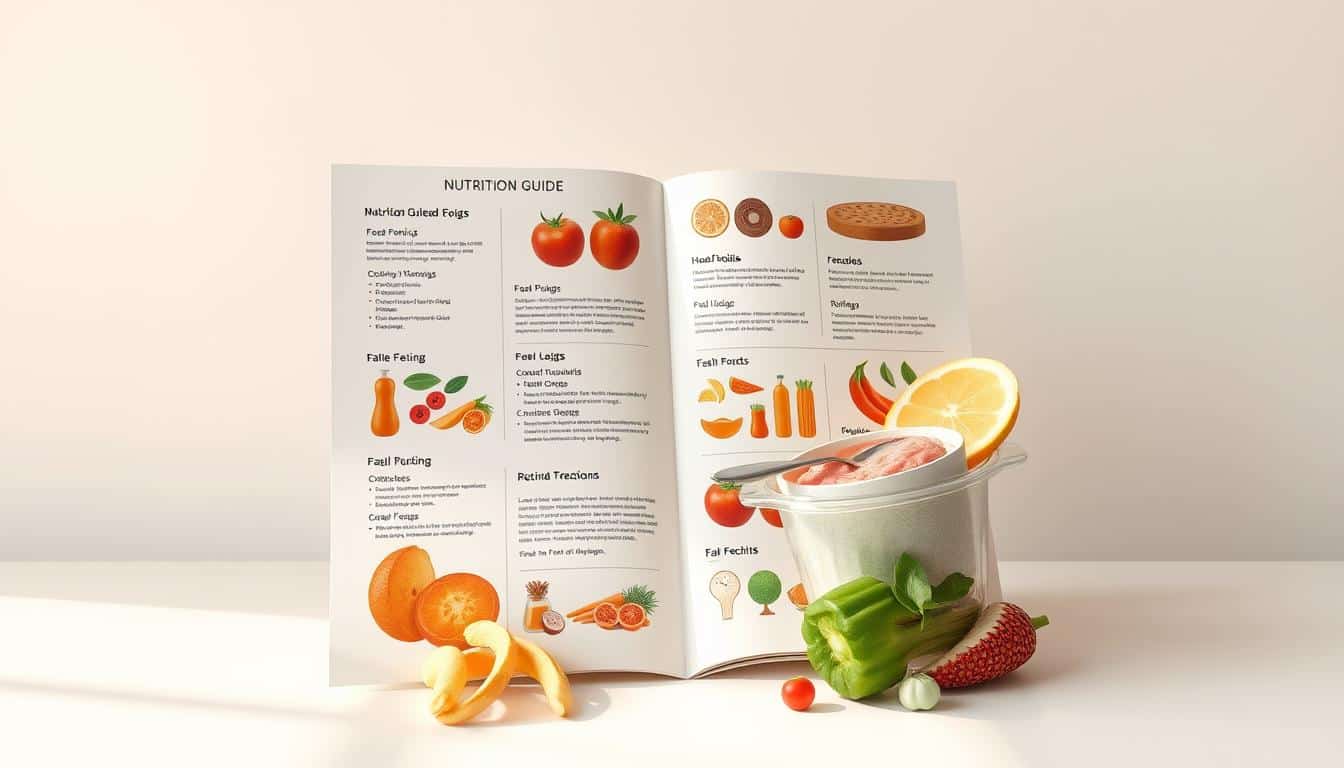About 70% of your training results come from what you eat, not just how you train. That truth shapes how we plan meals and portion meals for strong workouts and steady recovery.
I write this to give you clear steps you can use today. You get a simple take on the CrossFit prescription: meat and vegetables, nuts and seeds, some fruit, little starch, no sugar. I explain the Zone block system so you can portion without guesswork.
This short guide focuses on practical tips that boost performance and sustain health. You’ll learn which foods to favor, which to limit, and how to set meals and snacks to match your training and your day.
Ready to shop, cook, and track results? I’ll keep the plan simple so you can start at home, at work, and at the gym.
Why nutrition is the base of CrossFit performance
Food is the base layer that makes performance and recovery possible. It supplies the energy you burn in workouts and the building blocks your body uses to repair muscle.
CrossFit’s model puts nutrition at the bottom of the hierarchy. The simple guidance is clear: “eat meat and vegetables, nuts and seeds, some fruit, little starch, no sugar.” Keep intake to support exercise, not excess body fat.
Make small swaps that add up. Swap cereal for eggs, fruit, and avocado. Those changes raise energy and help insulin control over time.

Nutrition supports energy, recovery, and health
- Good nutrition gives steady energy for WODs and better recovery between sessions.
- Eating enough protein helps muscle repair after lifting and metcon work.
- Vegetables and low-GI fruit add fiber and micronutrients to support health.
Keep intake to support exercise, not body fat
Match your intake to your training load. That keeps body composition on track and energy levels steady.
Make small changes that add up
Try a 12-hour eating window with 3–5 meals to curb cravings and improve insulin sensitivity. Track how you feel in training and tweak intake up or down.
Want simple recipe ideas and snacks? Check these healthy desserts that match performance goals.
CrossFit nutrition basics: meat, vegetables, nuts and seeds, some fruit, little starch, no sugar
Simple, whole foods power your sessions and help your body repair. Build meals around lean meat and a big serving of vegetables. Add a handful of nuts or seeds and a small portion of low-GI fruit.
Choose whole foods over processed foods to steady energy and appetite. Keep each meal balanced: a clear protein source, a portion of carbohydrate, and a healthy fat.

- Reduce added sugar in drinks, desserts, and sauces to protect insulin control and reduce disease risk.
- Limit starch: cut back on bread, pasta, tortillas, and large potato servings.
- Skip industrial seed oils and use olive oil or avocado oil to lower inflammation and support health.
| Food group | What to choose | Portion tip |
|---|---|---|
| Protein | Lean meat, fish, eggs, cottage cheese | Palm-size serving per meal |
| Vegetables | Leafy greens, broccoli, peppers | 1–2 cups raw or 1 cup cooked |
| Fats | Olive oil, avocado, nuts, seeds | 1–2 tablespoons or a small handful |
| Carbs | Berries, apple, small starchy sides | Keep starch minimal; pick low-GI fruit |
Zone Diet overview for athletes
The Zone simplifies meal planning by tying portions to a simple block system. It sets macros at 40% carbohydrates, 30% protein, and 30% fat so you can plan meals without guesswork.
Macro ratio and what a block means
In the Zone the macro split is exact: 40% carbs, 30% protein, 30% fat. A block is a unit that makes that split usable at the plate.
| Block type | Per block |
|---|---|
| Carbohydrate | 9 g carbs (excl. fiber) |
| Protein | 7 g protein |
| Fat | 1.5 g fat |
Daily blocks and portioning
Most women start at 11 blocks per day. Most men start at 14 blocks per day.
A common split for women is three 3-block meals (breakfast, lunch, dinner) and one or two 1-block snacks. Adjust blocks up or down with training load and body signals.
Estimating portions: hand-eye vs weighing
Use the hand-eye method to get going. Then weigh and measure for a week to calibrate your estimates.
- Protein picks: chicken breast or cottage cheese help hit protein blocks cleanly.
- Fat picks: olive oil or avocado oil count as fat blocks without extra junk.
- Track hunger and performance levels to fine-tune your intake and meal timing.
Portion control, intake, and meal timing
Portion control and timing shape how you feel in training and beyond.
Eat three to five meals in a 12-hour window to steady energy and improve insulin sensitivity. Space intake to match your work and workouts. That helps hunger and keeps performance steady.
Keep pre-workout simple. Choose a small serving of carbohydrates and a bit of protein. Fruit or low-GI carbs work well to avoid sugar spikes.
After exercise, eat protein plus carbs. This combination speeds recovery and helps muscle repair. Use the hand-eye method to guide portions. Then weigh for a week to dial accuracy.
- Eat three to five times in a 12-hour window to control hunger and energy.
- Use one-block snacks to fill gaps without overeating.
- Keep fats lower right before heavy conditioning sessions.
- Carry a planned snack so you avoid random food choices after exercise.
- Track energy levels during workouts and adjust meal timing or portion size.
| Goal | Action | Tip |
|---|---|---|
| Pre-workout energy | Carbs + protein | Fruit or low-GI carbs 30–90 min prior |
| Post-workout recovery | Protein + carbs | 20–60 min window after training |
| Portion accuracy | Hand-eye then weigh | Weigh for one week to calibrate |
Foods to eat for performance and health
Pick foods that fuel workouts and help you recover faster. Build each plate around a clean protein source and large portions of vegetables. Keep fruit and healthy fats to controlled portions so energy stays steady and recovery is efficient.
Lean protein options
Aim for a palm-size serving of protein every meal. Use chicken breast (1 oz cooked = 1 protein block), cod or salmon (1.5 oz), tofu, or 1/4 cup cottage cheese. Protein supports muscle repair and keeps you full.
Vegetables and low-glycemic fruit
Load the plate with vegetables. Examples: broccoli (1.5 cups cooked per carb block), peppers (2 whole), asparagus (12 spears). For fruit, pick berries—blueberries 1/2 cup or strawberries 1 cup per carb block—for steady energy.
Healthy fats and simple portions
Use olive oil, avocado, nuts, and seeds to add flavor and calories without spikes. Portion cues: almonds (about 3 per fat block), avocado (1 tbsp), olive oil (1/3 tsp). These fats help cell function and hormone balance.
Omega-3 support
Add an omega-3 supplement to reduce inflammation and speed recovery. It’s an easy step that helps joints and overall repair after hard sessions.
- One cup of mixed vegetables pairs well with a palm-size protein serving.
- Keep staples — grilled chicken, roasted vegetables, olive oil — ready in the fridge.
- Rotate vegetables and fruit to cover vitamins and minerals.
| Food group | Serving cue | Why it helps |
|---|---|---|
| Protein | Palm-size / per meal | Muscle repair and steady recovery |
| Vegetables | 1 cup+ mixed | Fiber and micronutrients, low carbs |
| Fats | 1 tbsp oil or small handful nuts | Satiety and nutrient absorption |
Foods to limit or avoid
Certain high-sugar and high-starch items fill your carb budget fast and leave you hungry. Cut these to keep energy steady and recovery smooth.
Watch added sugar and high-glycemic carbs. Avoid soda, candy, ice cream, and sweetened coffee drinks. Skip juices and fruits that spike blood sugar like bananas, dates, figs, mangos, raisins, and concentrated fruit juices.
Limit grains, starches, and cheap oils. Keep bread, cereal, crackers, pasta, pancakes, and tortillas to a minimum. Reduce starchy vegetables such as potatoes, corn, peas, winter squash, and most legumes. These pack starch into a small serving.
- Skip industrial seed oils (canola, corn, soy, sunflower, safflower, grapeseed, cottonseed) and use olive or avocado oil instead.
- Watch processed foods that mix added sugar with cheap oil; they cost you blocks and add unhealthy fats.
- Manage sweets and sugar-sweetened drinks to lower weight and diabetes risk and reduce long-term disease risk.
- If you eat higher-starch items, measure them. A single cup can take several blocks.
- Plan snacks so you choose nuts, seeds, or a small protein instead of random processed food between meals.
| Item | Why limit it | Swap |
|---|---|---|
| Sweetened drinks & sweets | High sugar, quick hunger | Water, coffee, fresh berries |
| Grain-based foods | Concentrated starch | Vegetable sides, small fruit |
| Industrial seed oils | High omega-6, may boost inflammation | Olive oil, avocado oil |
Sample day menu with blocks for the best diet for crossfit athletes
Use this sample day to see how blocks translate to simple cups and ounces on your plate. The plan shows an 11-block day with clear measures you can prep ahead. Follow the swaps and keep fats measured to stay on target.
Breakfast: three-block meal
3 protein / 3 carbohydrate / 3 fat blocks.
Example: 3/4 cup cottage cheese (protein), 1.5 cups tomatoes (carbs), 1 cup blueberries (carbs), 9 almonds (fats).
Lunch: three-block meal
3 protein / 3 carbohydrate / 3 fat blocks.
Example: 3 oz grilled chicken (protein), 1 cup cooked asparagus (carbs), 1/2 cup cooked lentils (carbs), 1 tsp extra virgin olive oil (fat).
Snack: one-block options
1 protein / 1 carbohydrate / 1 fat block.
Example: 1 hard-boiled egg (protein), 2 cups cherry tomatoes (carbs), 1 tbsp avocado (fat).
Dinner: three-block meal
3 protein / 3 carbohydrate / 3 fat blocks.
Example: 4.5 oz baked salmon (protein), 1.5 cups broccoli + 2 cups collard greens (carbs), 1 cup strawberries (carbs), 1 tsp olive oil (fat).
Evening snack: one-block option
1 protein / 1 carbohydrate / 1 fat block.
Example: 1 oz mozzarella stick (protein), 2 cups bell pepper strips (carbs), 5 small olives (fat).
- Quick tips: Use cups and ounces to hit blocks without guesswork.
- Keep fats measured: teaspoons of olive oil or counted nuts work best.
- Rotate chicken, cottage cheese, or tofu to vary protein across meals.
- Prep foods in bulk so you can assemble meals fast and stay on target.
| Meal | Blocks (P/C/F) | Quick example |
|---|---|---|
| Breakfast | 3/3/3 | 3/4 cup cottage cheese; 1 cup blueberries; 9 almonds |
| Lunch | 3/3/3 | 3 oz chicken; 1 cup asparagus; 1/2 cup lentils; 1 tsp olive oil |
| Dinner | 3/3/3 | 4.5 oz salmon; 1.5 cups broccoli; 1 cup strawberries; 1 tsp olive oil |
| Snacks (total) | 1/1/1 + 1/1/1 | Egg + tomatoes + avocado; mozzarella + peppers + olives |
Performance, body composition, and research
Science on performance and body composition is mixed, so we rely on measured trials and real-world checks. Low-glycemic carbohydrates can help refill muscle glycogen and support workouts. But short trials show unclear gains in reps or power.
Low-glycemic carbs and muscle glycogen
Low-GI carbohydrates top off muscle glycogen without big blood sugar swings. They suit training days and long sessions.
One nine-day study found similar CrossFit rep counts at 1.4 g carbs per pound versus 2.7–3.6 g per pound. That suggests more carbs don’t always mean better performance in short tests.
Potential drawbacks: carbs, protein needs, saturated fats
Higher protein supports muscle repair, but very high intakes may be risky for people with kidney issues.
Saturated fats remain debated, especially from dairy. Check lab data and work with your coach or clinician if you worry about heart health or disease risk.
Track progress and adjust blocks or macros
Use simple markers to guide changes:
- Watch body weight, waist, and strength to judge fat loss and performance.
- If metcons feel flat, raise carbohydrates and retest workouts after a week.
- Adjust blocks by 1–2 per day and hold that change for seven days to see effects.
- Note sleep, soreness, hunger, and energy levels to guide tweaks.
| Measure | Why it matters | Action |
|---|---|---|
| Strength & reps | Shows muscle function | Tweak carbs or protein |
| Waist & weight | Tracks fat loss | Adjust blocks slowly |
| Blood markers | Health and disease risk | Consult clinician on fats |
Conclusion
Keep the plan simple: whole foods, measured portions, and consistent habits win over time.
Eat real food daily and keep processed foods low to support health and performance. Use the zone diet and the block system to portion meals and snacks without stress.
Fill plates with meat, vegetables, nuts and seeds. Choose olive oil when cooking and limit industrial seed oil blends. Aim for little starch and set intake to support exercise, not excess body fat.
Track progress each week, adjust blocks as needed, and plan a backup snack for busy days. Be patient. Small changes build lasting wins.


